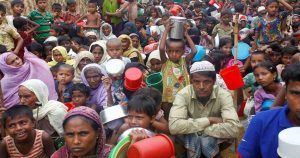‘Sound pollution causes high blood pressure, headache, indigestion, ulcer’
Dhaka – Motorcycles and private cars are the main sources of noise pollution in the country’s major cities, followed by public buses, says a new survey of the Department of Environment (DoE).The survey shows that public buses contribute relatively less noise than two other modes of transport, which indicates that introduction of public transportation can check the sound pollution in these cities.
The survey, conducted in eight cities earlier this year, reveals that motorbikes and private cars, on average, generate 95 decibels (dB) noise each in Dhaka city while buses contribute to about 44 dB.
In Chittagong, motorcycles and private cars generate 100 decibels (dB) sound each while public buses about 82 dB. In Sylhet, both motorcycles and private cars produced nearly 84 dB noise and buses generate only 40 dB sound.
The survey data shows that maximum 85 dB of sound is generated from motorcycles in Khulna, followed by 77 dB from private cars and 60 dB from public buses. In Barisal, motorcycles generate about 100 dB noise on average while 76 dB noise comes from private vehicles and 42 dB from public buses.
In Rangpur, motorcycles produce about 100 dB noise while private vehicles 98 dB and public buses only about 66 dB. Motorbikes contribute to 80 dB sound in Rajshahi while private cars 68 dB and buses 46 dB of sound.
In Mymensingh, the DoE data says, motorcycles and private cars contribute 88 dB of sound each while public buses only about 66 dB.
According to the statistics of Bangladesh Road Transport Authority (BRTA), there were 19.86 lakh registered motorcycles in October last, while 3.27 lakh private (passenger) cars and 43,154 buses across the country.
The number of the country’s registered motorcycles increased to 19,85,376 in October 2017 from 7,59,257 in 2010.
In the Dhaka metropolitan area, there were some 4.84 lakh registered motorcycles in August last, which was only 2.10 lakh in 2010 according to the BRTA statistics.
The number of registered private cars is 2.55 lakh, while that of buses is 30,274 ones in the city.
There were 32.17 lakh registered motor vehicles in October last in the country, while 11.50 lakh in August last in the Dhaka metropolitan area.
According to the Noise Pollution (Control) Rules 2006, the acceptable sound condition for Bangladesh is 50 decibel (dB) for daytime and 40 dB for the night in silent areas, 50 dB for daytime and 45 dB for the night in residential areas, 60 dB for the daytime and 50 dB for night in mixed areas (residential, commercial and industrial localities), 70 dB for daytime and 60 dB for the night in commercial areas and 75 dB for daytime and 70 dB for the night in industrial areas.
The World Health Organization (WHO) says generally 60 dB of sound can make a man deaf temporarily and 100 dB of sound can cause complete deafness.
Experts say sound pollution causes mental and physical illness among people. It causes high blood pressure, headache, indigestion, ulcer, and also affects sleep. Anyone may become deaf for the time being if 100 dB or more noise pollution occurs for half an hour or more in any place.
Aiming to check sound pollution in these cities, the DoE study recommended adoption and implementation of a ‘No Horn’ policy, banning import of hydraulic horns, taking measures to stop the use of locally-made horns, conducting comprehensive campaign to aware students and drivers of adverse impacts of horn use, and providing training to drivers to prevent unnecessary use of horn.- UNB




